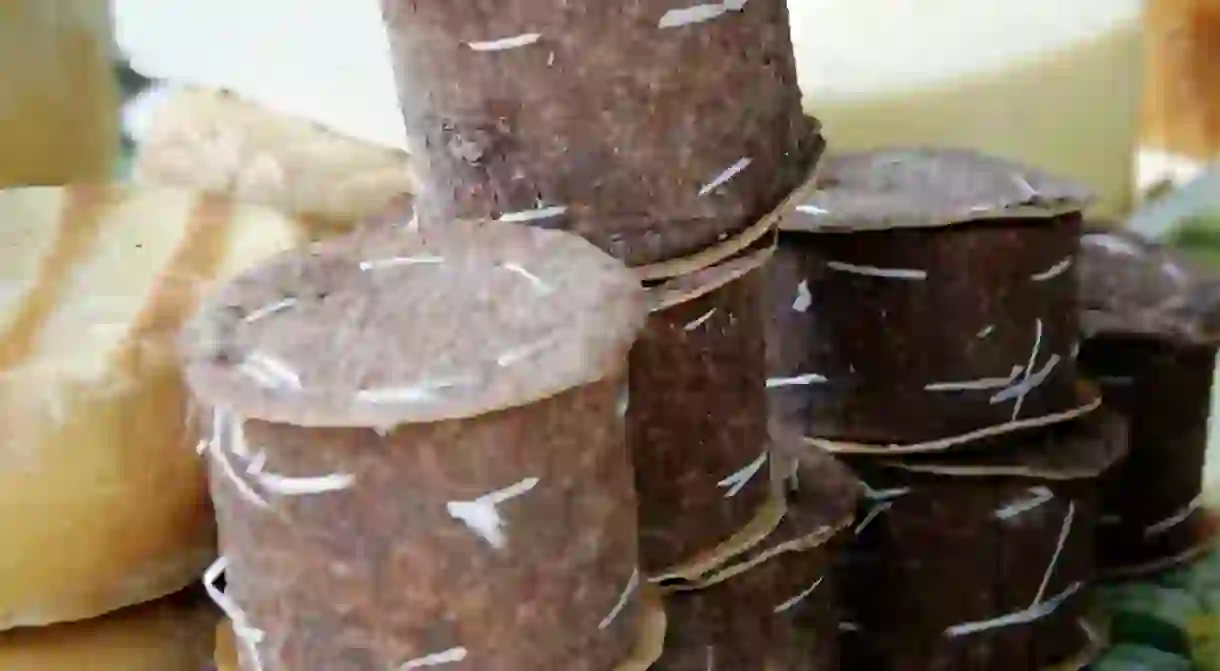The Ultimate Guide to the Best Romanian Cheese Types

From the no-fuss salty Telemea, the favourite staple food on every Romanian table, to the more exotic Brânză de burduf, a kneaded cheese set in fir tree bark and Năsal, a soft cheese aged in a tiny cave in Transylvania, many Romanian cheeses are vying for international recognition. Produced with the best local ingredients and using ancient traditions, they are the ultimate comfort food in any season.
Telemea
Made from either cow’s, sheep or buffalo milk, Telemea is the most popular cheese type in Romania. A salty cheese, it can be sold fresh or aged, usually cut in big cubes and immersed in a salty brine. The fat content can go up to 55%, which makes it the perfect creamy accompaniment to mămăligă, alongside crème fraîche, known locally as smântână. In summer, especially, you will find it on every Romanian table, served with a fresh tomato salad with white onion and a dash of sunflower oil. The most famous version, Telemea de Ibănești, became the second Romanian food product to obtain Protected Designation of Origin (PDO) status.
https://www.instagram.com/p/BQJMSwqBK_f/?tagged=telemea
Brânză de burduf
One of the most beloved Romanian culinary specialities, Brânză de burduf is a milky and creamy kneaded cheese with a big surprise factor. Traditionally made at sheepfolds, it follows a careful process made of distinct steps using traditional tools. Once the milk is passed through a sieve, it is warmed and, after being poured in a wooden bowl, it receives the rennet. After it sets, the solid part is separated using a fine piece of cloth. The resulting cheese wheels are kept in wooden boxes for between one and two weeks. The cheese is then cut in slices and passed through a grinding machine, salted, and stuffed into a sack made of two sheep skins. The variety made in the Bucegi Mountains region, matured in fir tree bark cylinders, receives a refined taste due to the unlikely but fertile love affair between the cheese’s fat and the resin contained in the bark.
https://www.instagram.com/p/-9N9Ffh1y2/?tagged=branzadeburduf
Cașcaval
Having its origins in Caciocavallo, the Sicilian stretched-curd cheese speciality, Cașcaval is a semi-hard yellow cheese with a high fat content made of sheep’s or cow’s milk. While the simple version, of creamy consistency with a strong milky taste is perfect as an appetiser, served alongside black olives, radishes and spring onion, the smoked variety made in the mountainous regions of Vrancea develops a more complex and refined taste. Usually served raw, Cașcaval is the main ingredient of a popular Romanian dish called Cașcaval pane, consisting of cheese slices deep fried in a coating of bread crumbs, served with salad.
https://www.instagram.com/p/BUGyasaFKny/?tagged=branzadeburduf
Caș
A type of soft, fresh cheese, Caș is the raw material used to prepare Telemea, Brânză de burduf and Cașcaval, and more. Made from sheep’s or cow’s milk, it is curdled using rennet, and later drained to separate it from the whey. Salty, or very lightly salted, it is served as a light snack alongside vegetables or used to make pies and tarts.
https://www.instagram.com/p/BEI-AdZqsUu/?tagged=casdeoaie
Urdă
Urdă is made primarily from whey, a by-product of cheesemaking. After the whey is separated from the cheese by draining, it gets heated until a silky, grainy and sweet tasting paste is obtained. Similar somewhat to Italian ricotta, it has a protein content of 18 grams per 100 grams of cheese. Traditionally used in fillings for pies and pancakes, it makes a great snack, especially when paired with berries, pears or walnuts.
https://www.instagram.com/p/BGT56IlJKJe/?tagged=casdeoaie
Năsal
A very particular type of Caș, Năsal is a soft type of cheese made of cow’s milk in the Transylvanian village of the same name. What makes this type of cheese unique is the ageing process, which takes place in a cave where a local bacteria lends it its special taste and properties. Once very small, today Țaga cave has been enlarged, but production is still very limited, due to the fact that the bacteria producing the fermentation lives in a part of the cave and could not be reproduced in a lab. The bold flavour and spiciness as well as the strong and particular smell make Năsal cheese the ideal partner to fruit, vegetables and wine, cognac and whiskey.
https://www.instagram.com/p/v3GP1YlS3Y/?tagged=branzanasal
Brânză Penteleu
A type of Cașcaval, Penteleu is a sheep milk cheese traditionally made by shepherds in the Vrancea mountains. Made using the same technique as that used for Cașcaval, it differs from its plain cousins through its hints of spiciness, acidity and creamier texture. It complements mămăligă dishes, such as bulz, perfectly.
https://www.instagram.com/p/BVSu78mF8Gq/?tagged=branza













